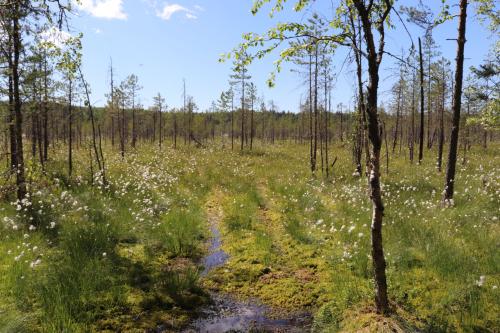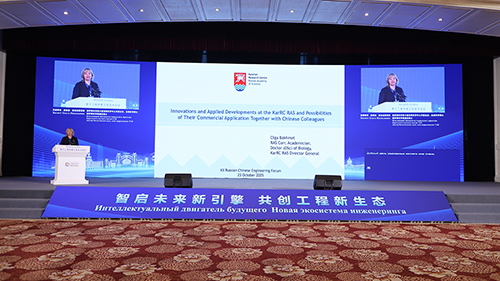Peatlands play a great role in our planet’s carbon balance. They sequester carbon dioxide and store carbon, thus neutralizing it. Mires occupy nearly a third of the territory of Karelia and the paludification process is ongoing.
Global warming and international climate agreements have rendered research on the role of natural ecosystems in the carbon balance ever more topical. Russia is creating a unified natural system for monitoring climate-active substances, including greenhouse gases. Their emissions are being actively studied by specialists at Karelian Research Centre’s institutes as well.
The Laboratory for Greenhouse Gas Monitoring at DMR KarRC RAS was established in 2022 within the Science and Universities national project. It primary objective is estimation of the carbon budget in natural and drained peatland ecosystems of the Northwest Russian boreal zone.
Scientists will collect and analyze field data to estimate carbon pools in boreal peatland ecosystems, greenhouse gas emissions, carbon leaching with water from peatlands, probability of carbon input from precipitation.
Head of the Laboratory Elizaveta Linkevich, Cand.Sci. (Chem.), told about the current activities and plans for 2023 at DMR Learned Council meeting. In particular, scientists have already chosen the first area to be studied – the 63 ha Blizkoye mire, situated in the Kivach Strict Nature Reserve. Greenhouse gas measurements there will be done by the closed-chamber method, using a special station for analyzing system-wide CO2 and methane fluxes.
The researchers will identify the factors influencing greenhouse gas emissions: anthropogenic, climatic, seasonal, etc. Peatland soils will be sampled to cover the entire depth and surface area of the mire, water samples will be collected, and the effects of seasonality and climate on the deposit’s major physicochemical characteristics will be assessed.
– We plan to pin down the relationship between peat-forming plants and the process of greenhouse gas emissions from the peatland surface and from the peat column. Techniques for structural group analysis of peatland soils will be elaborated, carbon distribution will be assessed, and correlations of greenhouse gas parameters with the main physicochemical characteristics and climatic conditions will be detected, – Elizaveta Linkevich shared.
Scientists will employ modern physicochemical techniques for greenhouse gas monitoring and measurement.
News

December 30, 2022
A new laboratory, for greenhouse gas monitoring, has been established at the Karelian Research Centre RAS. It will be part of the Department for Multidisciplinary Research (DMR). Laboratory staff will work to estimate the carbon balance in natural and drained peatland ecosystems of Karelia.
See also:

October 27, 2025
KarRC RAS Director General Olga Bakhmet presented practical developments by Karelian scientists at the 12th China-Russia Engineering and Technology Forum
KarRC RAS Director General Olga Bakhmet delivered a plenary talk at the 12th China-Russia Engineering and Technology Forum in the Chinese Harbin. The CEO presented our scientists’ developments in biotechnology, aquaculture, remote sensing, greenhouse gas monitoring, geology, and other fields, as well as announced the international environmental conference on the BRICS regional-level cooperation to take place in Petrozavodsk next year.
KarRC RAS Director General Olga Bakhmet delivered a plenary talk at the 12th China-Russia Engineering and Technology Forum in the Chinese Harbin. The CEO presented our scientists’ developments in biotechnology, aquaculture, remote sensing, greenhouse gas monitoring, geology, and other fields, as well as announced the international environmental conference on the BRICS regional-level cooperation to take place in Petrozavodsk next year.



